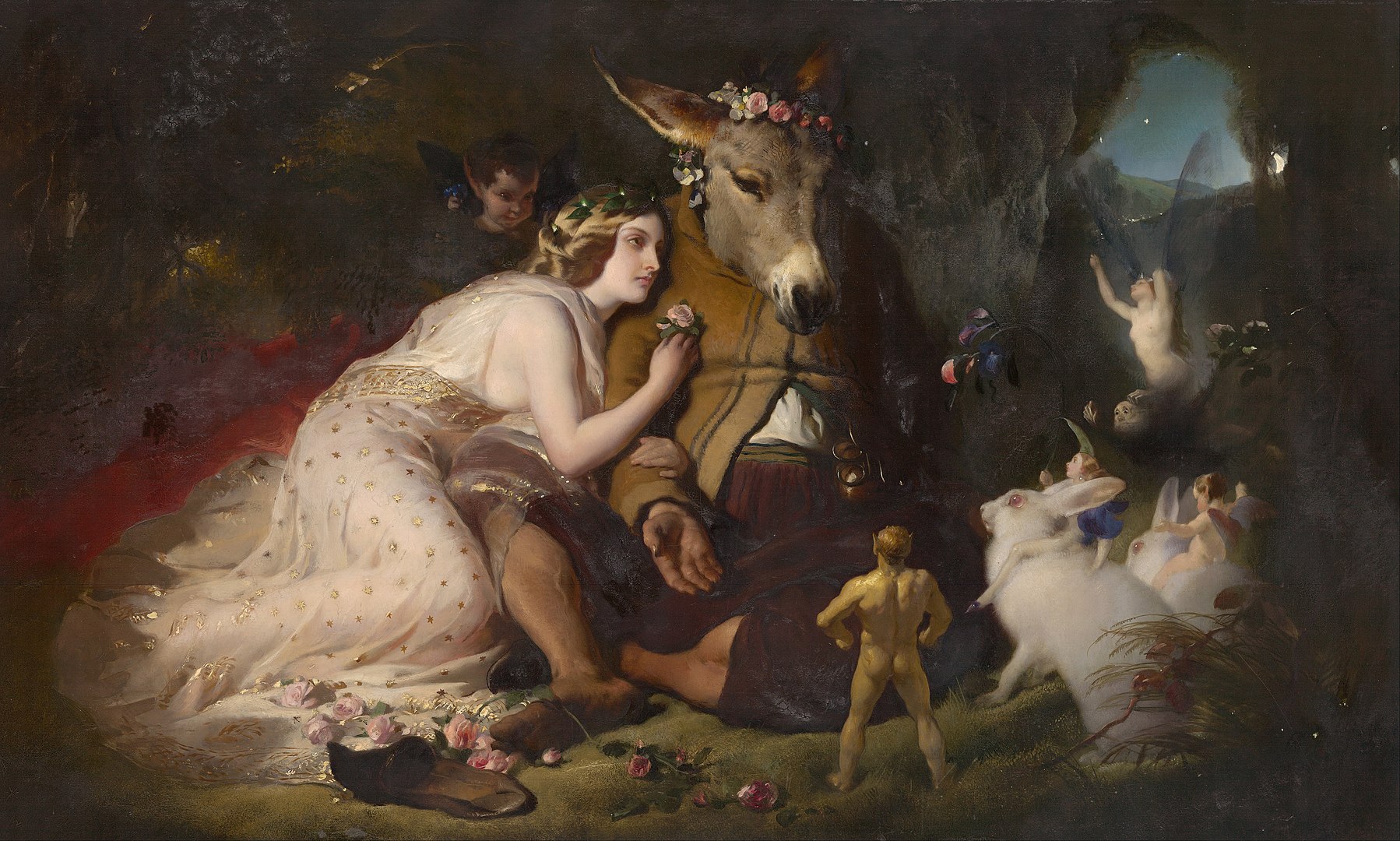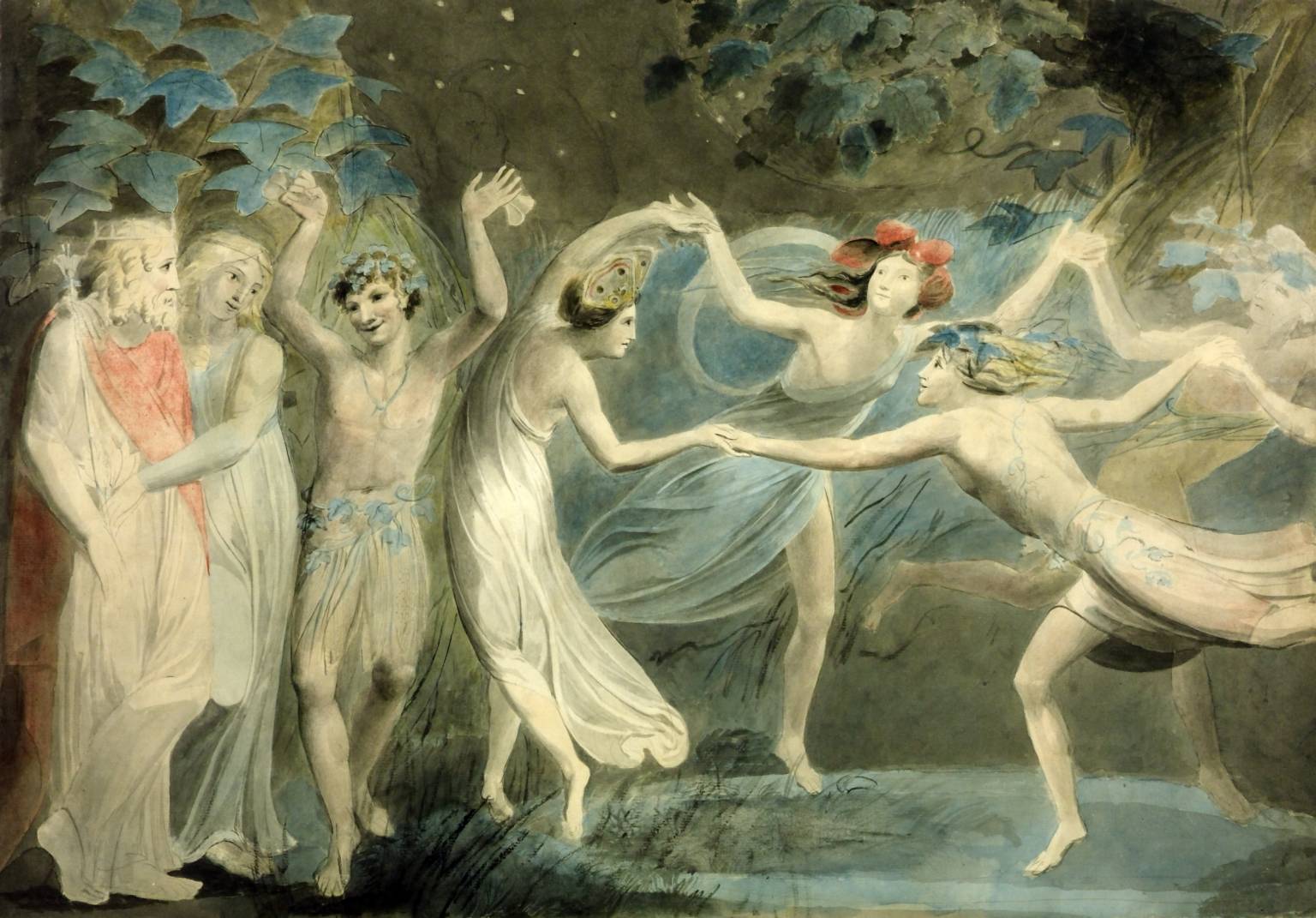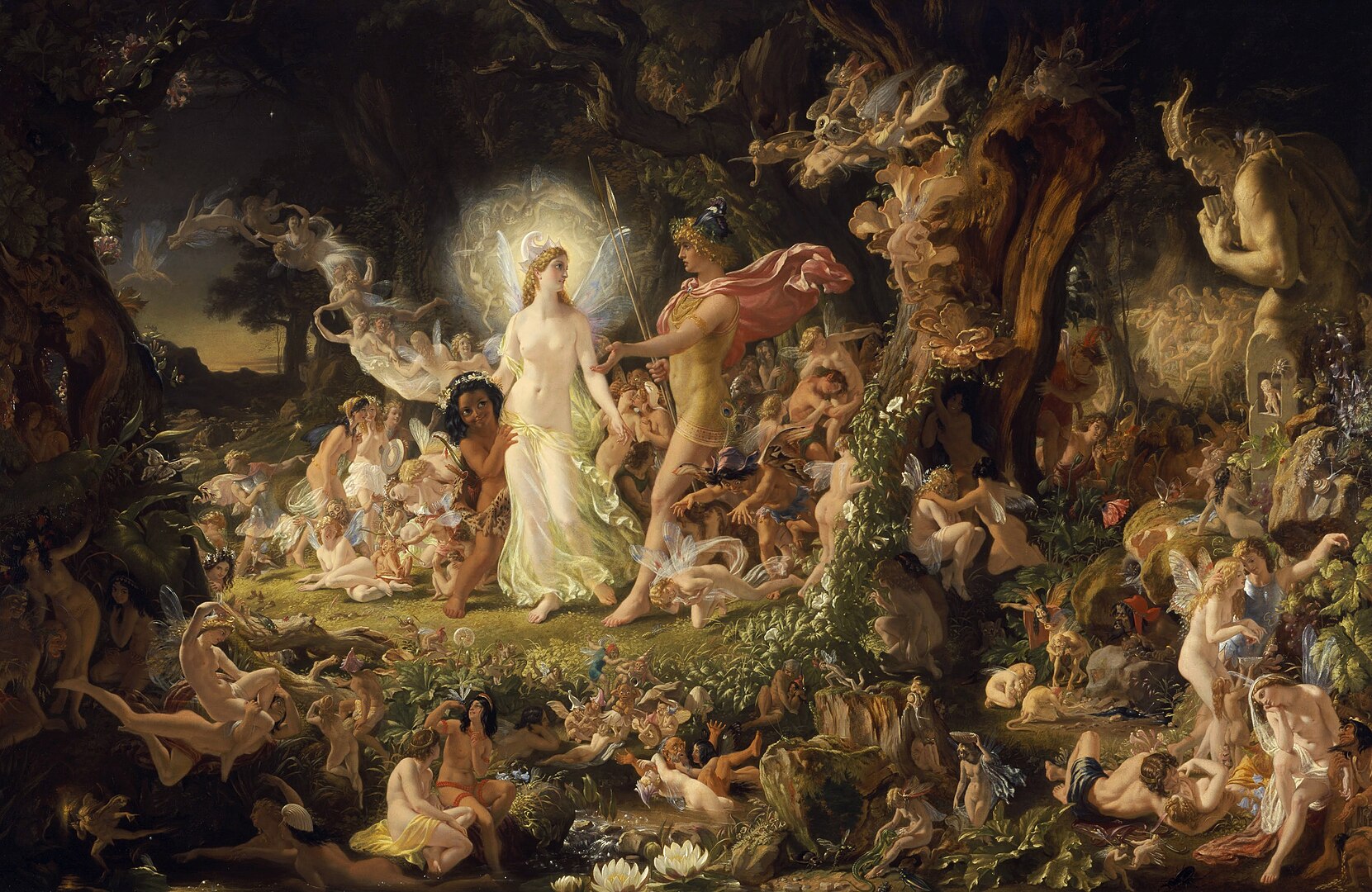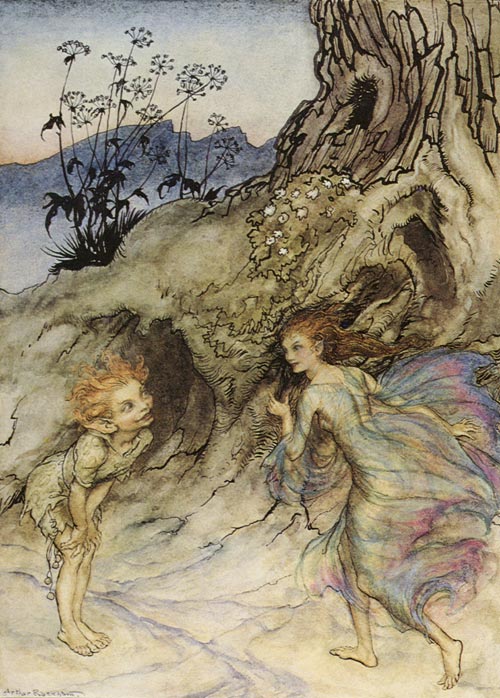10.2 Midsummer Night’s Dream (1594-1596)
Imagination and a World of Wonder: A Midsummer Night’s Dream (1594-1596)

This Edwin Landseer painting was commissioned by the engineer Isambard Kingdom Brunel to hang on his dining room wall as part of a series of Shakespeare-themed works. The painting, its subject likely selected by Landseer for its close ties to animals, was popular from its first exhibition; a young Victoria (future Queen of England) described it as “a gem, beautifully fairy-like and graceful”. (Wikipedia)
A Midsummer Night’s Dream Synopsis (Folger Shakespeare Library)
“In A Midsummer Night’s Dream, residents of Athens mix with fairies from a local forest, with comic results. In the city, Theseus, Duke of Athens, is to marry Hippolyta, queen of the Amazons. Bottom the weaver and his friends rehearse in the woods a play they hope to stage for the wedding celebrations.
Four young Athenians are in a romantic tangle. Lysander and Demetrius love Hermia; she loves Lysander and her friend Helena loves Demetrius. Hermia’s father, Egeus, commands Hermia to marry Demetrius, and Theseus supports the father’s right. All four young Athenians end up in the woods, where Robin Goodfellow, who serves the fairy king Oberon, puts flower juice on the eyes of Lysander, and then Demetrius, unintentionally causing both to love Helena. Oberon, who is quarreling with his wife, Titania, uses the flower juice on her eyes. She falls in love with Bottom, who now, thanks to Robin Goodfellow, wears an ass’s head.
As the lovers sleep, Robin Goodfellow restores Lysander’s love for Hermia, so that now each young woman is matched with the man she loves. Oberon disenchants Titania and removes Bottom’s ass’s head. The two young couples join the royal couple in getting married, and Bottom rejoins his friends to perform the play.”
Famous Quotations from A Midsummer Night’s Dream
“The course of true love never did run smooth.
(Shakespeare, 1594-1596, A Midsummer Night’s Dream, 1.1)
Love looks not with the eyes, but with the mind,
And therefore is winged Cupid painted blind.
(Shakespeare, 1594-1596, A Midsummer Night’s Dream, 1. 1.)
I must go seek some dewdrops here,
And hang a pearl in every cowslip’s ear.
(Shakespeare, 1594-1596, A Midsummer Night’s Dream, 2. 1.)
Ill met by moonlight, proud Titania.
(Shakespeare, 1594-1596, A Midsummer Night’s Dream, 2. 1)
I know a bank where the wild thyme blows,
Where oxlips and the nodding violet grows,
Quite over-canopied with luscious woodbine,
With sweet musk-roses and with eglantine:
There sleeps Titania sometime of the night,
Lulled in these flowers with dances and delight.
(Shakespeare, 1594-1596, A Midsummer Night’s Dream, 2.1.)


For more information this painting, please open the link here.
Shakespeare’s plays were richly illustrated by artists such as Eugene Delacroix, Arthur Rackham, Gustav Dore, William Blake, William Hamilton, and Daniel Maclise. In plays like “A Midsummer Night’s Dream” the audience is transported to an enchanted forest realm of fairies, sprites, and magical transformation. The tragic depths of plays like “Macbeth” and “Hamlet” contrast with the uplifting messages and beautiful settings of plays like “As You Like It”, “Twelfth Night”, and “A Midsummer Night’s Dream”. Students can study one of the illustrated Shakespeare plays to gain a greater insight into the way artists interpreted the setting, plot, and characters. Art is interpretation and each artist bring their own personality, values, beliefs, and ideals. The Golden Age of Illustration is best seen through the works of artists like Arthur Rackham, W. Heath Robinson, Edmund Dulac, Walter Crane, and Gustav Dore.


